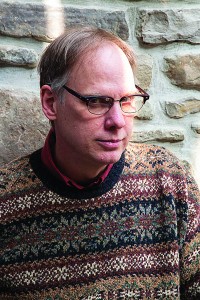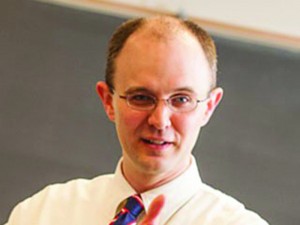Q: Why did you choose to take a sabbatical this year?
A: Sabbaticals are very competitive. Not everyone who applies is awarded one. Houghton, like most colleges awards up to four sabbaticals per year. A faculty member is eligible for one after 7 years of teaching (hence the name- reflecting the 7th day of rest) this is my 3rd sabbatical in my 28+ years teaching at Houghton. No matter what year I took a sabbatical some group of students would feel a bit abandoned. I applied for a reduced load sabbatical, which is a bit different from the typical half year or year long versions most faculty elect to take. A half-year is one semester off with full pay. A full year is half pay. I extended a sabbatical over the entire year by teaching 1/2 year throughout the enter year. This gives me only a few contact hours per week on campus and the rest of the time working at my home. I did not want to leave my senior painting and drawing majors completely. This way I still have some limited contact with them in their final senior capstone studio work. I only teach. No committee work or academic advising. It has worked out very well for me. I hope my students feel the same.
Q: What are some of the projects you have worked on?
A: I stated in my application that I wanted to concentrate on three areas of my professional work.
-
Studio work
-
Reading in my field and in literature
-
Reading and research in Film
I feel the best so far about the studio work. I work about 30- 50 hours each week on my paintings (they are really not strictly paintings…mixed media pieces). I average about 2 per week. The drawing phase for each piece takes about 12-18 hours. The painting and mixed media another 10. They are all 7X10 inch works. So far I have completed about 45. By September I hope to have between 75-100 from which I will exhibit about 20-25. These are far more labor intense than work I have done is many years. For the past 7-8 years my watercolor paintings could (and should ) be done in about an hour. At the end of each year I had typically about 200 paintings. From which I would exhibit about 10%.
My reading has gone about as I anticipated. I have concentrated on several postmodernist writers.
 David Markson, David Foster Wallace, William Gaddis, George Saunders, and Borges.
David Markson, David Foster Wallace, William Gaddis, George Saunders, and Borges.
I have also immersed myself in poetry- particularly 20th century Polish poetry by Wislawa Szymborska, Zbigniew Herbert, Bronislaw Maj, and Czeslaw Milosz as well as the Portuguese writer Fernando Pessoa. There are many others- Louise Gluck, Mary Oliver, Tomas Trasnstromer , John Berryman and James and Franze Wright.
I have continued my interest in Shakespeare over this sabbatical with a couple of works of criticism Shakespeare After All and Shakespeare and Modern Culture by Margorie Garber, and Tony Tanner’s Prefaces to Shakespeare. This and the plays themselves which I can listen as I paint.
Film has been mostly work in a few directors I have become more interested in Yasujiro Ozu, Andrei Tarkovsky, and Robert Bresson. I have also been reading in art. Works on Magritte, Balthus, Deibenkorn, Gorky, and Amy Sillman.
Q: How has it affected your work as an artist?
A: I needed time to to immerse myself in a new body of work. Creative work is unlike scholarly work in that no clear ideas can be set out as a plan. The work grows out of the working process. This time to just work and see where it leads has been very productive. I also had opportunity to see several important exhibitions is New York. The Magritte show at the MOMA and the Balthus exhibition at the MET. As well as The Art Institute of Chicago.
My sabbatical really began with my participation in the CIC (Center of Independent Colleges) Seminar at the High Museum in Atlanta where I was one of 20 faculty selected nationally meet and discuss 17th century Dutch art and patronage. This was centered on the Royal Picture Gallery of the Mauritshuis from The Hague, Netherlands, on exhibit is Atlanta.
(home of the Girl With A Pearl Earring, Vermeer) and 38 other works. (the Show started in San Francisco at the Young Museum, High Museum of Atlanta and concluded at the Frick Museum in New York City) This seminar was fully funded by the Kress Foundation and was a magnificent experience. This has also impacted greatly my work.
Q: Have you read/learned anything interesting during this time?
A: NO…just kidding…I have already covered this above.
Q: Do you think it has given you the time and rest you need?
A: I feel a relief from the teaching responsibility. But more so from the committee and departmental day in and day out complications. This is all part of the job for a faculty member. Last year I was very busy with Rank and Tenure committee, Honors student work and interviews and preps, departmental hires and decisions and advising. This year my colleagues have relieved me of this and it has been very helpful. That is what we do for each other.
I am grateful to the school for this time and look forward next year to exhibiting my new work and giving a lecture on this material. Currently I have an exhibition of 10 paintings At Milligan College is Johnson City Tennessee. Some of these works will be included in my show post sabbatical.

